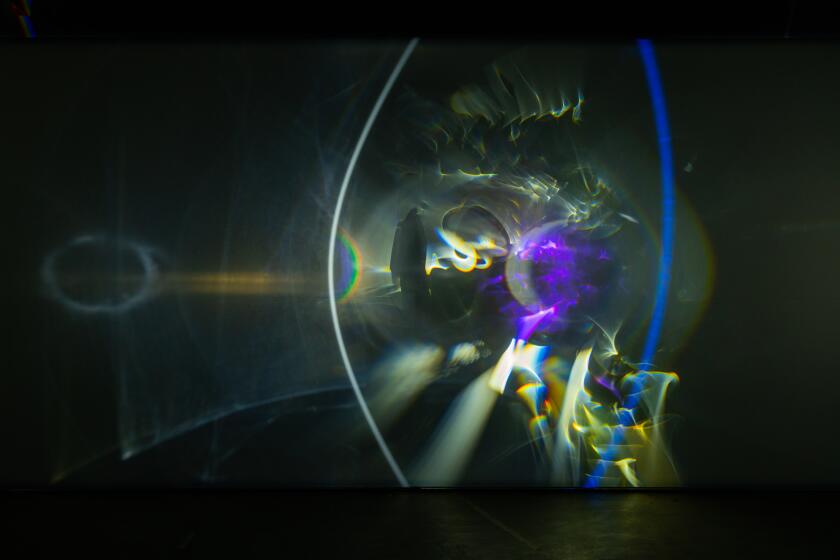Cappella Romana calls out to a higher power
Cappella Romana’s concert Sunday afternoon at the Getty Center was sold out. That’s an encouraging sign but also a bewildering one.
What can this austere, text-based, Eastern Orthodox Church music, dating from the late 13th to the late 15th century, mean to the listener today, even when sung with such strength and commitment as it was by this Portland, Ore.-based seven-member a cappella male ensemble led by Alexander Lingas?
Imagine being transported back to the first performance of a Bach cantata. The music was not meant for entertainment but for involving the congregation in a service. Later generations have divorced the music from that source. The cantatas live that way, but they’re different.
The music of the Cappella program, taken from manuscripts in the Holy Monastery of St. Catherine at the foot of Mt. Sinai and meant to complement the museum’s “Holy Image, Hallowed Ground: Icons From Sinai” exhibition, remains more closely tied to the source.
However much it offered in the way of beautiful singing or sensuous appeal, its intention was to inform and establish a relationship between the listener and the faith of the church. From that point of view, criticism of performance is irrelevant.
Perhaps to create the ambience of a church in the dry acoustics of the Harold M. Williams Auditorium, the singers were amplified. The music consisted of straightforward chant (alone and layered above a bass drone), melismatic extensions and more virtuosic and complex dramatic segments. Meaning was enhanced in small ways: -- a series of Alleluias on a rising, stepwise sequence, a surge on a single word, the fanning out in color and dynamic on a phrase, a cadence on a unison.
The post-intermission “Service of the Furnace” used all three kinds of singing to tell the story of Shadrach, Meshach and Abednego cast into a fiery furnace because they refused to worship a golden idol set up by King Nebuchadnezzar. In this text, the three children have no names because their names are not significant; only their relationship to God is.
When, in an interpolated section, Nebuchadnezzar sees an angel preserving the children, his vocal line pushes into stratospheric heights to express his astonishment. But the music soon dampens down, returning to its true purpose, worship of God.
Here we have the answer to what this music can mean to us today. We may still seek relationship with something higher.
*
More to Read
The biggest entertainment stories
Get our big stories about Hollywood, film, television, music, arts, culture and more right in your inbox as soon as they publish.
You may occasionally receive promotional content from the Los Angeles Times.










